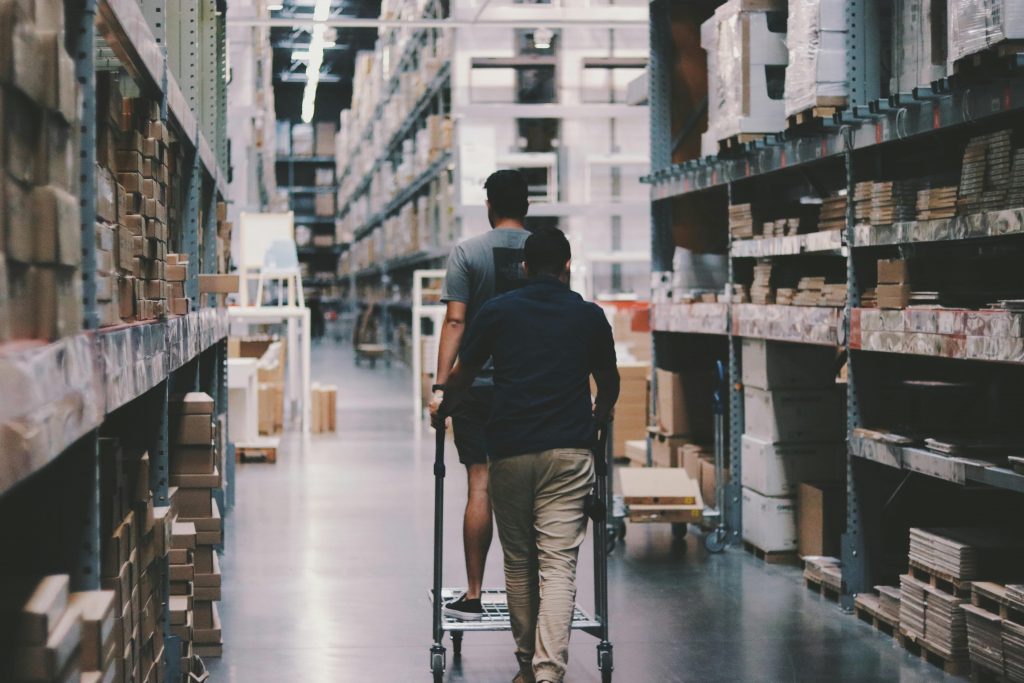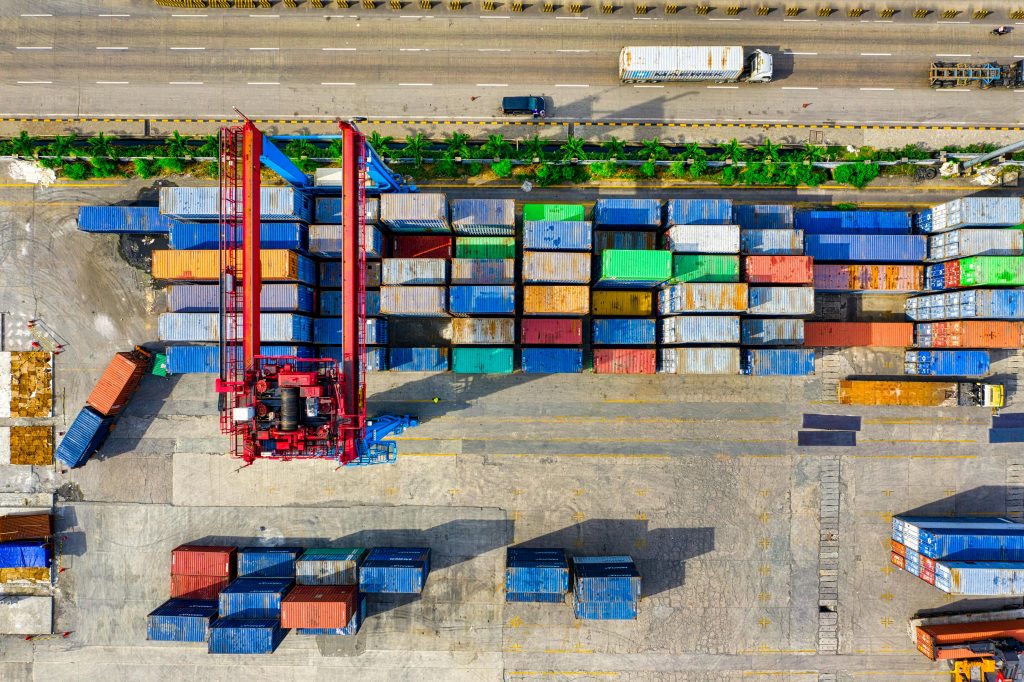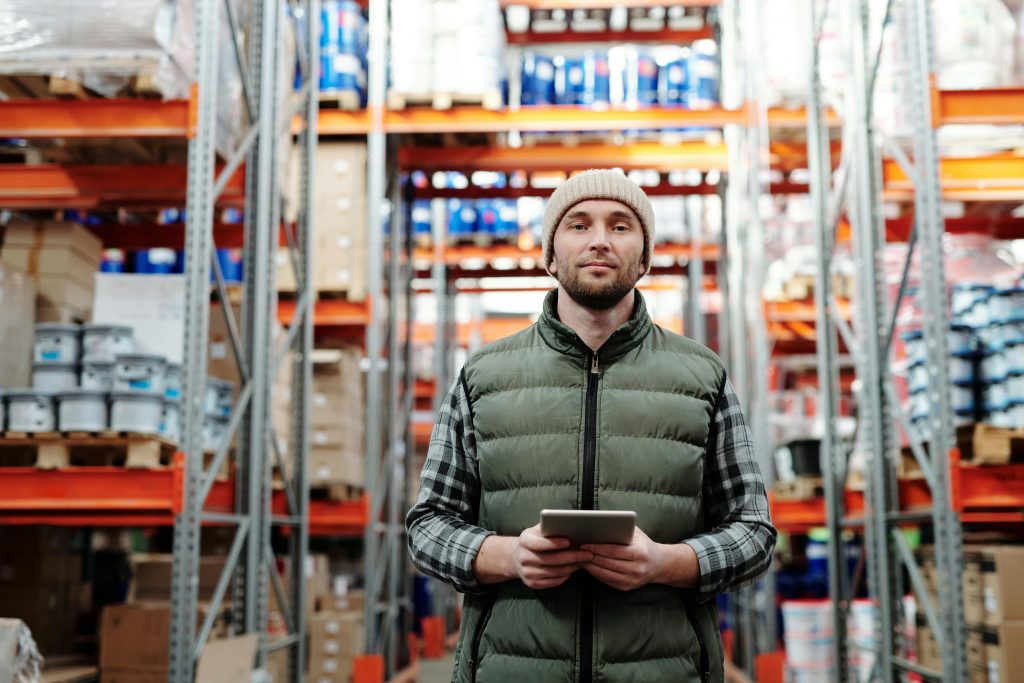AI in logistics & supply chain: Real-world examples, benefits
What is AI for logistics? Knowledge of the role of AI
AI in logistics is no longer a science fiction film—it’s changing the way the logistics and supply chain industry does business these days. Speed and efficiency are the ultimate goals in the global economy, and companies are increasingly relying on AI to remain competitive. For most companies, though, it’s not “Why AI?”—it’s “How do we even begin?”
AI can be used to automate repetitive tasks, predict demand, monitor inventory, and route optimization—but discovering the proper solution and how to incorporate it into current processes without disrupting current operations might be overwhelming.
As more global trade and consumers continue to drive demand, the logistics sector is under even more pressure to deliver goods into the future earlier and at a lower cost. AI in logistics directly tackles these issues by reducing waste and costs. With AI development services, you don’t need to figure it all out alone. Our team will guide you through every step—from idea to implementation—to ensure AI works for your business.

Image from Pexels (source)
Why businesses are turning to AI in logistics
The pressure to deliver goods faster, reduce costs, and keep customers happy has never been higher. AI logistics is arriving to help this sector address these requirements at face value. But what does that actually mean in real life?
Key benefits of AI in logistics
1. Lower operating costs
AI for logistics can perform routine work that would otherwise require human intervention, such as data entry, order filling, and warehouse operation coordination. Reducing the need for manual intervention cuts labor costs and minimizes human mistakes. This equates to less error, less time loss, and ultimately, cost savings that can be returned to your company.
2. Smarter decisions, faster
Smarter decisions are important benefits of AI in logistics. Imagine having a machine that can scan millions of data points in real time. It is possible for AI solutions to do this, providing logistics managers with the insights they require to make quicker and more efficient decisions on shipping routes, inventory, and asset utilization. It means quick response to changes in the marketplace, keeping your company agile and competitive.
3. Sustainability & green logistics
Today, in the world, sustainability has never been more important. With AI in logistics and supply chain, delivery routes are optimized to reduce fuel consumption and carbon emissions. Further, with improved inventory management, AI logistics use cases reduce waste and overproduction, making your business more environmentally friendly. This not only benefits the world but also improves the image of your brand.
4. Better workforce management
AI can predict peak hours and help schedule the right amount of workers to meet demand. For example, if there’s a surge in orders during the holiday season, AI can foresee this and ensure there are enough workers on hand. It helps with productivity but also with employee morale because the workers aren’t going to be overwhelmed during peak hours.
5. Easy order fulfillment
AI can handle various aspects of the fulfillment of orders, from sorting the stock to filling in the customers’ orders. This speeds up the entire process and improves its accuracy so that customers get their orders in a correct manner and on time. An efficient process of fulfillment streamlines your operation as a whole.
6. More accurate forecasting
By analytics through AI, logistics staff can predict more accurately when and where products will be needed and in what amount. This prediction prevents you from either being out of stock or being overstocked so that you always get the products at the right place at the right time. Better forecasting can lead to higher customer satisfaction and loyalty.
7. Happier customers
AI enhances customer satisfaction through real-time tracking of orders and faster service. Customers prefer receiving it at the exact time they anticipate receiving their orders. In addition, AI enables personalized messaging in the form of a message or notification based on a customer‘s preference. Satisfied customers return and refer more frequently.
8. Predictive maintenance
One of the greatest advantages of AI is that it can forecast when equipment or vehicles will break down. Using sensor data and past performance, AI will alert you to potential problems before they happen. It means less downtime, smoother running, and less repair expense, ultimately keeping your logistics up and running.

Image from Pexels (source)
Real-world applications: AI in action
Let’s see some examples of AI in logistics:
Automated warehouses
One of the prominent AI in logistics examples is Amazon. AI-powered robots are used in Amazon’s warehouses to pick, pack, and sort products. The benefit? Packages arrive more quickly, and prices drop.
Demand forecasting
FedEx uses artificial intelligence in logistics and supply chain to predict shipping volume on holidays, so they can have the right resources in place.
Route optimization
UPS saved millions by using AI to calculate the fastest, most fuel-efficient delivery routes.
Driver safety
DHL uses AI software to monitor driver behavior in real time, reducing accidents and improving efficiency.
Fleet management & telematics
Vehicle performance, fuel use, and driving styles are tracked by AI-based systems, allowing businesses to reduce costs and extend vehicle lifespans.
Damage detection during transit
Products can be checked for damage during transit using computer vision technology, identifying issues early.
Autonomous delivery
Amazon and other giants are testing drones and robots for last-mile delivery, speeding up deliveries and reducing human contact.
Smart inventory management
Artificial intelligence in logistics tools helps maintain optimal inventory levels, reducing overstocking or stockouts.
Dynamic pricing
Artificial intelligence in logistics enables companies to adjust prices based on demand, allowing them to stay competitive and maximize profits.
Automated paperwork
AI can automate bills of lading, invoices, and other documents—faster and with fewer errors.
Challenges in implementing AI in logistics
Why implementing AI in logistics is not as easy as it seems
AI promises a revolution in logistics: smart routes, predictive deliveries, robots in warehouses. But there’s a gulf between the idea and its realization. And here’s why.
- Old systems vs. new technologies
Many logistics companies still operate on outdated ERP systems that are decades old. Integrating modern AI solutions into them is like connecting a spaceship to a locomotive. Compatibility, data processing speed and flexibility simply don’t stand up to the competition.
- Data issues: messy, incomplete, disjointed
AI without data is like a navigator without GPS. But logistics involves thousands of data sources, from drivers’ manual records to warehouse scanning systems. This data is often unstructured, duplicated, or simply missing. Training AI from such a base is no easy task.
- Resistance from staff
Automation can cause anxiety: “Will a robot replace me?” Many employees perceive AI as a threat rather than a helper. This inhibits technology adoption – especially at levels where human expertise and intuition are key.
- High implementation and support costs
AI is not just “plug and play”. Investment in hardware, infrastructure, data scientists is required. Plus – regular model updates, calibration, security. For small and medium-sized businesses, this can be prohibitive.
- Ethical and legal risks
AI in logistics is often associated with the processing of AI in logistics is often associated with the processing of personal data, tracking, behavioral prediction. Which means issues of privacy, GDPR compliance, and ethical decision-making without human involvement. The wrong model can not only go wrong, but also lead to legal consequences.
- Lack of one-size-fits-all solutions
Logistics is a complex, multi-layered system. What works for e-commerce may not work for B2B distribution or refrigerated transportation. Every AI solution requires customization, which means time and resources.
Why work with Data Science UA?
You don’t need to be an AI expert—we’ll be your experts.
As a data science development firm, we’ve helped logistic organizations convert big ideas into working systems that save costs and time. Our team is made up of Ph.D.s and AI engineers who understand the complexity of logistics and how to apply AI correctly and securely. With more than 8 years of experience, we know what works.
We helped an automated logistics client manage their warehouse inventory. The result? 30% lower operating cost, 25% faster order fulfillment, and a much happier operations team.
We don’t just build solutions—we build confidence in your ability to use them.
What‘s ahead for AI in logistics?
The future of AI in logistics will be even more revolutionary. Companies that are aware of and implement these technologies will be more likely to thrive in a more competitive marketplace. What follows is a closer look at what’s ahead for AI in logistics, separating key innovations and what they will mean for your business.
Self-driving trucks & drones
The concept of autonomous vehicles has passed the threshold of science fiction. Autonomous trucks and delivery drones are in the testing phase and will be inevitable components of logistics operations soon. Technology giants like Waymo and Amazon are working on these technologies to maintain delivery timelines intact and reduce costs.
- Cost savings: Autonomous vehicles do away with the requirement for drivers, meaning a huge saving on labor costs.
- More efficiency: These vehicles will run day and night, and delivery will be quicker.
- Improved safety: AI systems can reduce the possibility of human error, and thus the likelihood of accidents during road travel.
Smarter warehouses
Imagine a warehouse where all from restocking to package tracking is automated by AI with minimal human touch. That is the future of smart warehouses, where AI-driven systems manage inventory levels, optimize storage solutions, and enable smooth operations.
Benefits:
- Maximized use of space: AI can maximize product demand analysis and restructure space accordingly to utilize maximum space.
- Fewer mistakes: With automated tracking and sorting, the likelihood of misplacing things decreases considerably.
- Quick fulfillment: Computer-driven systems have the ability to automate order processing, resulting in faster turnaround times for shipment.
IoT + AI = real-time logistics
IoT devices and AI combined are changing the game in logistics. IoT sensors can track anything from the status of shipment to vehicle performance, giving real-time information that AI can utilize to make informed decisions.
Advantages:
- Instant updates: Businesses can get real-time updates on the status of the shipment, and they can then take proactive actions for delays or problems.
- Increased visibility: Due to real-time tracking, businesses can update the customers, resulting in higher overall satisfaction.
- Data insights: AI and IoT collaborate to gain better insights into business operations, allowing firms to make more strategic decisions.
Fleet Intelligence
AI in logistics is going to transform fleet operations by predicting which trucks should be serviced, mapping out the safest routes, and organizing deliveries based on several conditions such as urgency and customer specifications.
Benefits:
- Proactive maintenance: Breakdowns can be avoided by pre-scheduling maintenance beforehand before any issue arises, reducing downtime.
- Optimized routing: AI can learn to analyze traffic and weather conditions to provide the safest and shortest routes.
- Improved resource allocation: Through smart prioritization of deliveries, companies can maximize customer service and operations productivity.
Market and demand prediction
As AI technology continues to evolve, its ability to predict market trends and customer behavior will be improved. This will allow logistics companies to stay ahead of demand volatility, always prepared to meet customers’ needs.
Benefits:
- Better Inventory Management: Accurate forecasting leads to optimum inventory levels, reducing excess stock and stockouts.
- Higher Customer Satisfaction: Anticipating customers’ needs in advance means better service and fulfillment, which can lead to loyalty.
- Strategic Planning: Understanding market trends allows businesses to adapt their strategies proactively, ensuring they remain competitive.
Full automation
Looking further ahead, we might have whole chains of logistics, from buying to delivery, become automated. While humans will remain engaged in dealing with exceptions and overall strategy, mundane tasks can be done by AI systems.
Benefits:
- Enhanced efficiency: Automation does away with bottlenecks, leading to faster processing and delivery times.
- Cost saving: With less manual process involved, operating costs can be significantly minimized.
- Scalability: Automated systems can scale operations rapidly to keep pace with growing demand without a commensurate rise in costs.

Image from Pexels (source)
Final thoughts
The role of artificial intelligence in logistics is great. The savings in money, the boost to customer satisfaction, and the opportunity for efficiency gains are mind-boggling. But challenges such as cost of deployment, employee training, and data security have to be overcome.
The more time firms wait to embark on AI, the more difficult it will be to catch up with firms that have already begun leveraging such technologies. If you‘re ready to experience what AI has to offer to your logistics company, Data Science UA is here to assist you with applications of artificial intelligence in logistics and supply chain. With our analytical expertise, technical acumen, and business-focused mindset, we‘re the ideal partner to guide you through your AI in transportation and logistics experience. Let‘s work together to future-proof your logistics business and keep you ahead of the curve with innovation.
FAQ
How is AI improving supply chain management?
AI is helping with demand forecasting, inventory optimization, route optimization, and responding to disruptions in real-time.
How is AI helping in replenishment and inventory management in logistics?
It forecasts demand, automates replenishment, and gives optimized inventories.
What are the most significant AI technologies being utilized in logistics?
Machine learning, computer vision, predictive analytics, and natural language processing.
How is AI changing last-mile delivery in logistics?
With autonomous drones, smarter routing, and real-time tracking, last-mile delivery is faster and more reliable.
Is AI stealing logistics jobs?
Not necessarily. It’s changing the nature of work—freeing humans to focus on complex, strategic tasks.
How can AI assist in ensuring sustainability in logistics?
It reduces fuel consumption, reduces waste, and improves overall resource management.